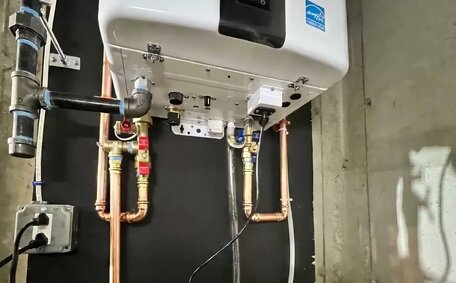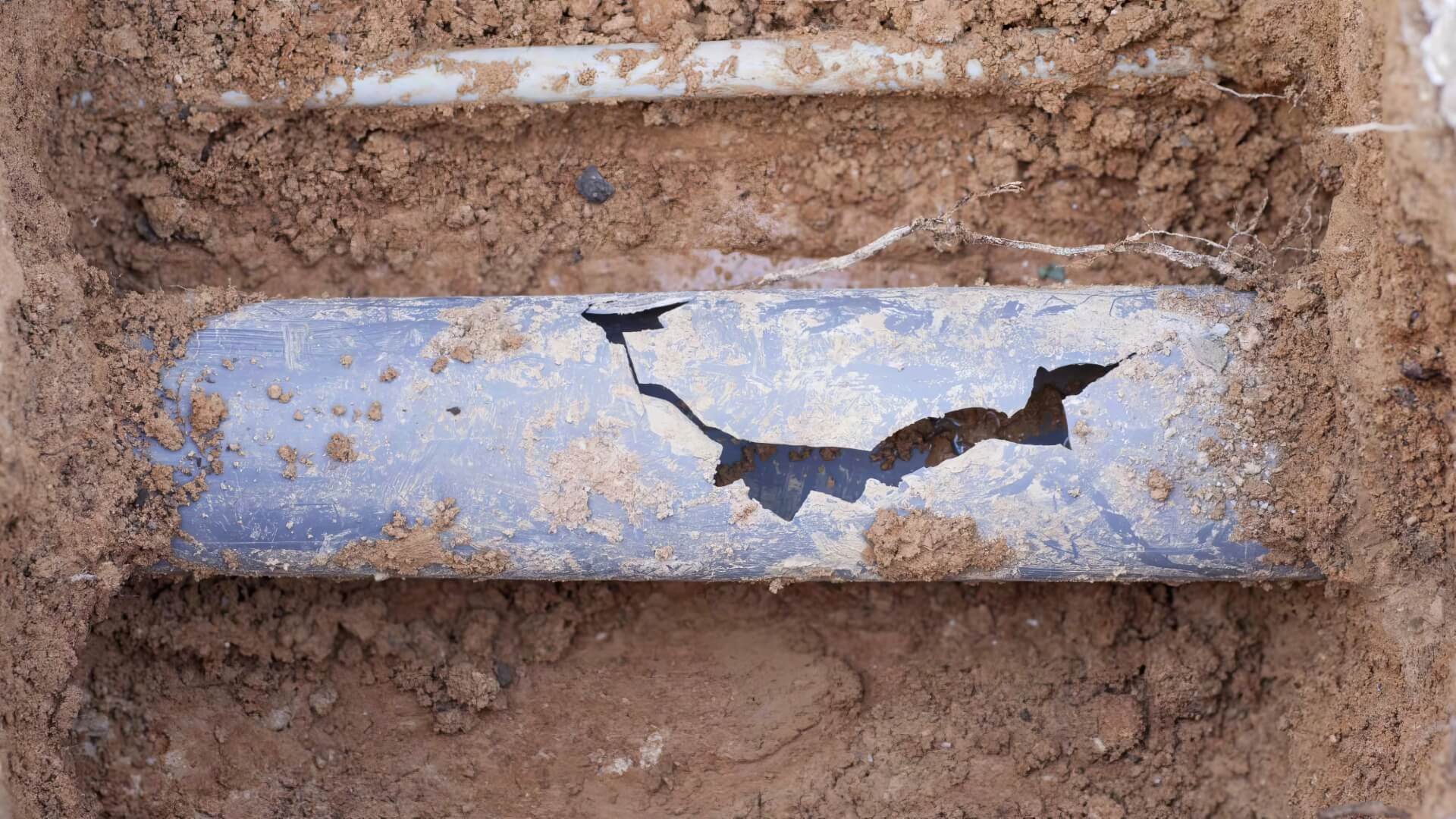The Importance of Testing Relined Pipes
Testing relined pipes for structural integrity and performance is vital in pipe relining procedures. Thorough testing of the plumbing system is mandatory after pipe relining to ensure it’s safe for regular use.
Detailing the intricacies of pipe relining is crucial to ensuring the prolonged service life of the pipes.
- Verifies proper sealing and prevents leaks: Conducting tests via water or air pressure is essential in identifying any weak areas or openings in the liner, ensuring drain relining efficacy and preventing future leaks.
- Confirms it’s stronger than before: Testing exerts stress on the relined pipe to verify it can bear long-term pressure without any structural compromises.
- Identifies any defects or issues: Testing often using cameras can identify any sections of pipe that may not have sealed correctly or have other defects that need to be addressed.
- Provides quality assurance: Thorough testing demonstrates the quality of the pipe relining work and provides assurance that pipes have been restored correctly.
- Extends service life: Correctly tested and relined pipes can deliver many years of service, similar to new pipes.
In summary, Techniques such as hydrostatic pressure testing and meticulous camera inspections are critical to validate pipe integrity in relining projects. This verification confirms the sewer pipe relining is correctly done, ensuring that the pipes are structurally sound before being put back into service.
Preparing for Relined Pipe Integrity Testing
Before starting integrity tests on relined pipes, essential preparatory steps must be taken to safeguard your drains:
- Allow curing time for epoxy - The epoxy resin, part of the process where you need dig up nothing, requires sufficient time to fully cure and harden before testing, usually at least 24 hours.
- Safety checks - Ensuring the absence of gas or hazardous fumes in the pipes before testing is crucial for health and safety, our top priority.
- Clear access points - Any access points into the pipe system need to be cleared to allow for camera and testing equipment insertion.
- Assess testing equipment needs - Determine required equipment such as pressure gauges, flow metres, cameras etc based on pipe dimensions.
- Verify section isolation - The section of relined pipe must be isolated through valving to test only that portion and contain pressure.
- Inform occupants - Notify residents that water service may be temporarily halted during drain clearing and hydrostatic testing procedures.
- Cordoned testing area - Rope off area around pipe access points to prevent disruption and for safety.
As a non-disruptive method, trenchless relining is advantageous, preserving gardens and landscapes while meeting pipe restoration needs. By diligently adopting these preparatory measures, you ensure a seamless pipe relining process, upon which our clients can rely, so there’s no need to dig up your otherwise tranquil garden.
Equipment Needed to Test Relined Pipes
Specific tools are essential for testing the integrity of relined pipes, an integral part of the relining process:
- Highpressure water jet gauges - Essential in monitoring the pressure within, optimally utilised during tests which deluge the pipes with water and exert pressure.
- Flow meters - Measure water flow to identify leaks or blockages in pipes.
- Drain cameras - Provide crucial insight by examining the inner surfaces for uniformity post-relining.
- Pipe plugs - Seal off sections of pipe to isolate areas for testing.
- Resin test strips - Check for any uncured resin and proper coating thickness.
- Holiday detection device - Employing tiny amounts of electric current to detect minuscule holes or weak spots in the pipe liner.
- Safety gear - Hard hats, protective eyewear, gloves etc. for crew safety.
Using tools such as CCTV drain inspection rigs provides thorough validation of the pipe’s epoxy barrier integrity after relining. The resin bonding essential to the process, relining can result in an incredibly robust fix that requires stringent testing before resuming operation.
Conducting Pressure Tests on Relined Pipes
Once preparations are complete, pressure testing is performed to confirm the integrity of the relined pipe. The main steps to ensure newly relined sewer pipes meet standards include:
- Isolate the pipe section - Use inflatable stoppers or plugs to seal off the area in question.
- Inject epoxy resin - Engulf the isolated section with highpressure water, thus purging all air pockets.
- Install equipment - Attach a pressure gauge and hydraulic pump, which we use for rigorous hot water testing, at an access point.
- Pressurise - Use the pump to increase water pressure up to 110% of the pipe’s rating.
- Hold pressure - Sustain the test pressure for a requisite period, after which we can then scrutinize for stability.
- Examine for blockages - Beyond leaks, attentively scrutinise the epoxy liner and connections for any signs of a blocked sewer.
- Record pressure - Note pressure gauge readings at regular intervals to check for drops.
- Release pressure - Upon completion, carefully relieve pressure by opening end caps.
- Final inspection - Conduct a CCTV camera inspection to validate relining and identify any defects.
Water pressure testing certifies that relined sewer lines can withstand normal system pressures, ensuring they integrate into the pipelines leak-free and without risk of failure. It provides quality assurance and evidence that pipe structural integrity has been restored.
Performing Video Inspections of Relined Pipes
Video inspection with a drain camera is essential for validating the quality of the pipe relining job and detecting any defects or irregularities.
The main steps when performing a CCTV inspection are:
- Prepare access - Ensure clean access points into system for camera equipment.
- Insert camera - Feed camera head, attached to a flexible cable, inserted into the pipe access point.
- Inspect pipe - Skillfully navigate the cable through the entire span, scrutinising the liner coated epoxy resin for uniformity and defects.
- Observe condition - Note any imperfect bonding, cracks, holes, blockages etc.
- Compare to pre-lining video - Cross reference to original pipe condition.
- Document findings - Record noteworthy observations and capture images/video.
- Retrieve camera - Extract camera cable from pipe when complete.
Video inspection provides visual confirmation that pipes have been properly relined and have no structural or obstruction issues before being put back into service.
Interpreting Relined Pipe Test Results
After concluding, pressure testing and CCTV inspections provide essential insights into the success of pipe repairs on your damaged drain. Accurately interpreted results confirm the pipe relining job’s quality within your sewer system.
For hydrostatic pressure tests integral to our relining services, the key factors to assess include:
- Achieving and maintaining test pressure - Ensures there no compromise in liner strength.
- A lack of leaks or pressure drops confirms complete epoxy curing and the absence of defects.
- No abnormalities at joints/fittings - Shows properly sealed connections.
When analysing CCTV inspection footage of your plumbing system, crucial elements to look for include:
- Intact, uniform epoxy layer - Demonstrates correct application and bonding.
- No cracks, holes or weak spots - Proves structural stability.
- No blockages or storm water drainage system obstructions - Ensuring that drain pipes provide a clear conduit for proper flow, especially protecting against common issues like tree roots.
- Comparison to pre-lining video - Validates the integrity of each relined section.
If testing identifies any issues requiring attention, the damaged sections can be re-accessed and corrected as necessary. When results are positive, don’t hesitate; call us for assurance that the relined pipes are certified and ready for service.
Common Issues to Check for in Relined Pipes
When inspecting and testing relined pipes, there are some common issues to look out for:
- Incomplete liner adhesion - Check CCTV footage for any bubbles, gaps or loose resin between pipe and liner.
- Pinhole leaks - Carefully check liner for tiny holes that can cause leaks.
- Weak spots in liner - Note any thin or compromised sections of epoxy coating.
- Blocked sections - Inspect for obstructions or buildup preventing proper flow.
- Cracks or fractures - Scan for any cracks or fractures in the epoxy indicating instability.
- Obstructed flow - Ensure no blocked sewer drain issues at seals or joints, which are critical for the successful outcome of relining.
Identifying any defects or problem areas in relined pipes using CCTV inspections and pressure testing allows your plumber can pinpoint and re-access specific sections. This preventive approach secures the longevity of repairs and safeguards against tree root intrusion, a common cause of expensive pipe failures.
Knowing When to Call a Professional Plumber
There are a few key situations where it’s essential to call in a professional plumbing company like Minchinbury Plumbing for assistance with relined pipe testing and repairs:
- If pressure testing reveals leaks or failing liner sections - Trying to fix it yourself risks further damage, thus reaching out to the experts who can fix it is crucial.
- For complex test result interpretation, our skilled team can accurately analyze results and identify issues for targeted repairs.
- To access difficult pipe sections - Our team today has the tools and know-how to gain access if re-lining is needed on tricky pipe routes.
- For determining the exact location of issues - We possess a comprehensive suite of top-tier pipe inspection and testing equipment.
- For safety reasons - Inadequate testing procedures pose risks such as gas leaks, flooding, and worsening of blockages if not managed with care.
Our certified plumbers, skilled in residential and commercial settings, can conduct thorough inspections and reliable repairs for your piping systems across the Gold Coast.
Contact our experienced team at Minchinbury Plumbing for expert assistance or to schedule an appointment on 1300 349 338 or jobs@minchinburyplumbingservices.com.au.
Comparing Pipe Relining to Full Replacement
When weighing options for broken pipes, homeowners often compare pipe relining vs full replacement to determine the best of the pipe repair methods. Here we discuss the key contrasts between pipe replacement methods for rectifying a damaged pipe:
Cost
Pipe relining, especially for revamping old pipes, is recognised for being more cost-effective than traditional repairs, negating the need for full replacements. Pipe relining revitalises old pipes by coating their inner surfaces with epoxy resin. Contrary to full replacement, which calls for excavating your yard and new pipe materials, pipe relining simplifies the repair process.
Time
Trenchless technology enables the completion of pipe relining swiftly, within hours or days, reducing labour and minimising impact on your property. Compared to full pipe replacement, our pipe relining solutions are significantly less intrusive, taking less time and preserving your landscaping.
Disruption
Pipe relining is designed to curb disruption, preserving the integrity and aesthetics of your home. The access points for pipe relining can be designed to avoid any digging up, preserving the peace of your garden sanctuary. Full replacement not only involves extensive excavation but, unlike our methods, we dont see the same effectiveness in preventing issues like your blocked drain as with the relining approach.
Longevity
Concerning durability, our pipe relining methods guarantee a lifespan akin to new pipe installations, extending the overall service life. Our relining services come with guarantees and extensive warranties, providing peace of mind regarding durability.
To sum up, the advancements in pipe relining technology make it the best solution, as a superior trenchless option offering significant savings in costs, time, and minimising disruptions vis-à-vis traditional pipe replacement. For professional pipe relining services, reach out to Minchinbury Plumbing at 1300 349 338.






